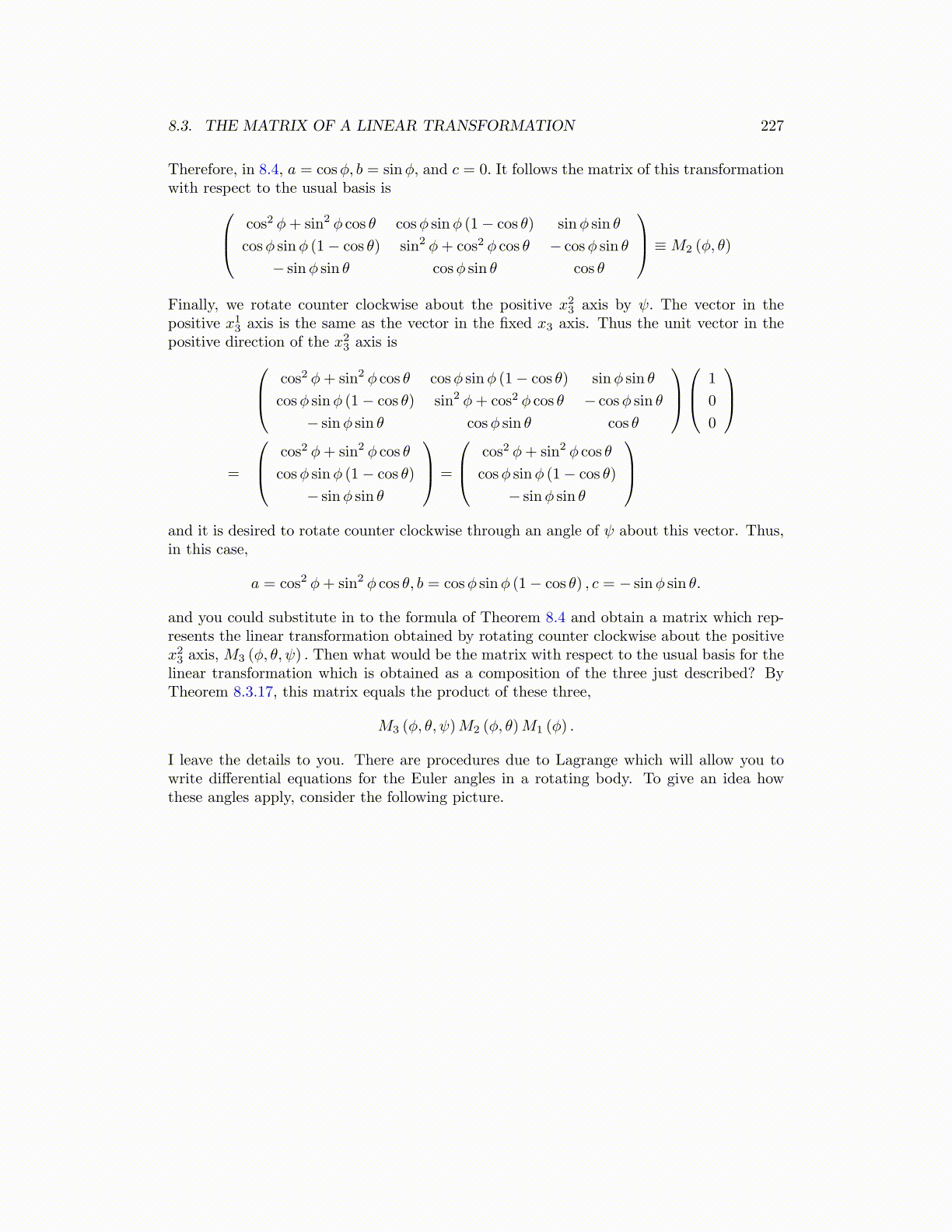
8.3. THE MATRIX OF A LINEAR TRANSFORMATION 227
Therefore, in 8.4, a = cosϕ, b = sinϕ, and c = 0. It follows the matrix of this transformationwith respect to the usual basis is cos2 ϕ+ sin2 ϕ cos θ cosϕ sinϕ (1− cos θ) sinϕ sin θ
cosϕ sinϕ (1− cos θ) sin2 ϕ+ cos2 ϕ cos θ − cosϕ sin θ
− sinϕ sin θ cosϕ sin θ cos θ
≡M2 (ϕ, θ)
Finally, we rotate counter clockwise about the positive x23 axis by ψ. The vector in thepositive x13 axis is the same as the vector in the fixed x3 axis. Thus the unit vector in thepositive direction of the x23 axis is cos2 ϕ+ sin2 ϕ cos θ cosϕ sinϕ (1− cos θ) sinϕ sin θ
cosϕ sinϕ (1− cos θ) sin2 ϕ+ cos2 ϕ cos θ − cosϕ sin θ
− sinϕ sin θ cosϕ sin θ cos θ
1
0
0
=
cos2 ϕ+ sin2 ϕ cos θ
cosϕ sinϕ (1− cos θ)
− sinϕ sin θ
=
cos2 ϕ+ sin2 ϕ cos θ
cosϕ sinϕ (1− cos θ)
− sinϕ sin θ
and it is desired to rotate counter clockwise through an angle of ψ about this vector. Thus,in this case,
a = cos2 ϕ+ sin2 ϕ cos θ, b = cosϕ sinϕ (1− cos θ) , c = − sinϕ sin θ.
and you could substitute in to the formula of Theorem 8.4 and obtain a matrix which rep-resents the linear transformation obtained by rotating counter clockwise about the positivex23 axis, M3 (ϕ, θ, ψ) . Then what would be the matrix with respect to the usual basis for thelinear transformation which is obtained as a composition of the three just described? ByTheorem 8.3.17, this matrix equals the product of these three,
M3 (ϕ, θ, ψ)M2 (ϕ, θ)M1 (ϕ) .
I leave the details to you. There are procedures due to Lagrange which will allow you towrite differential equations for the Euler angles in a rotating body. To give an idea howthese angles apply, consider the following picture.